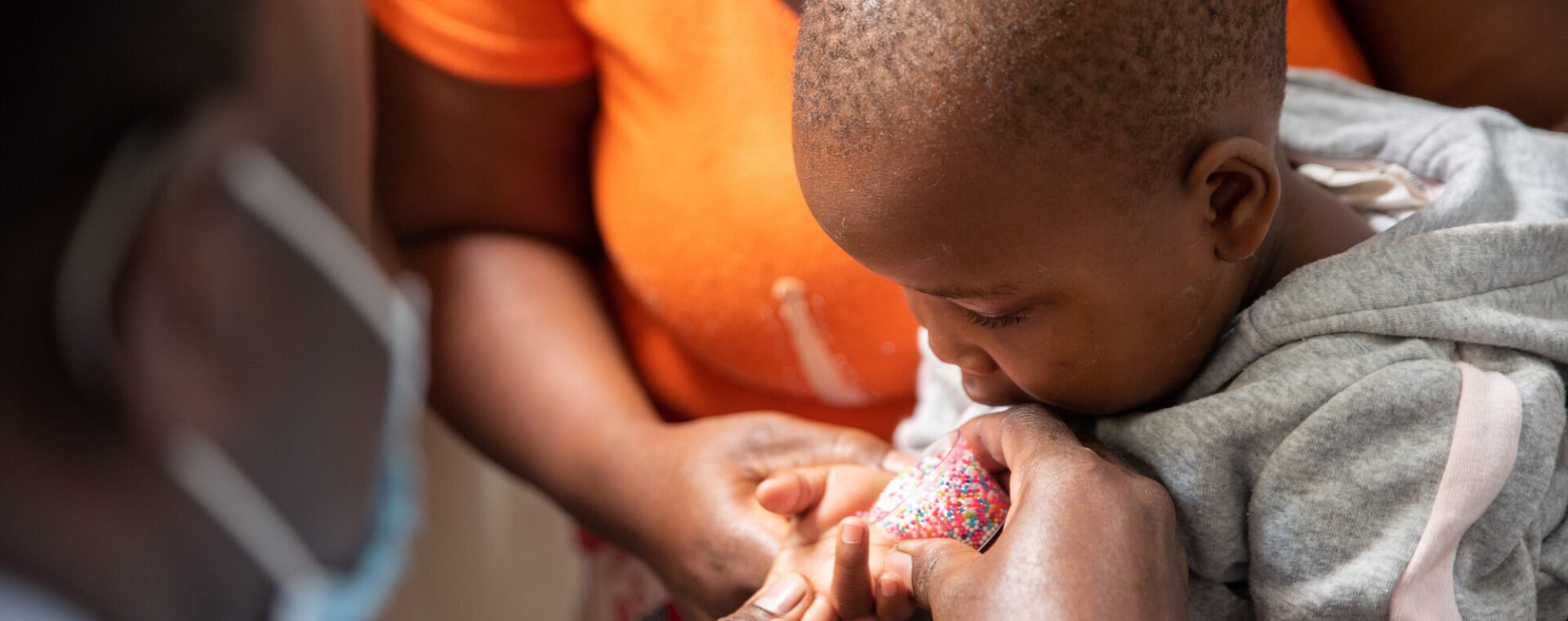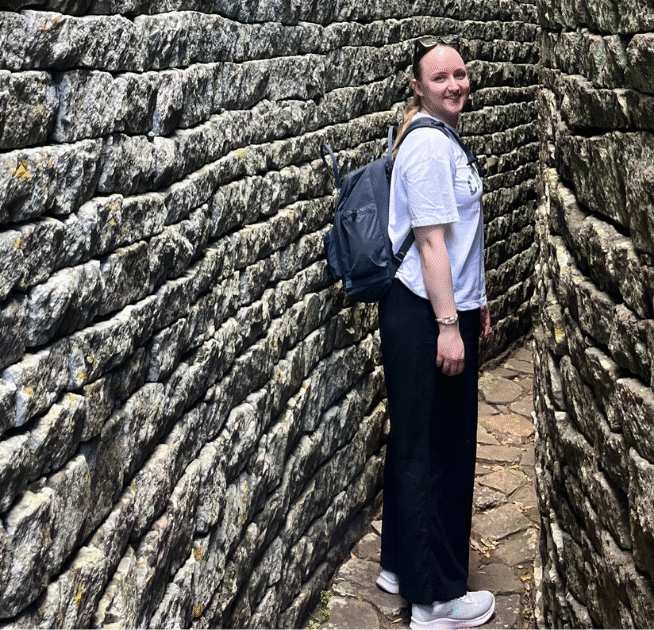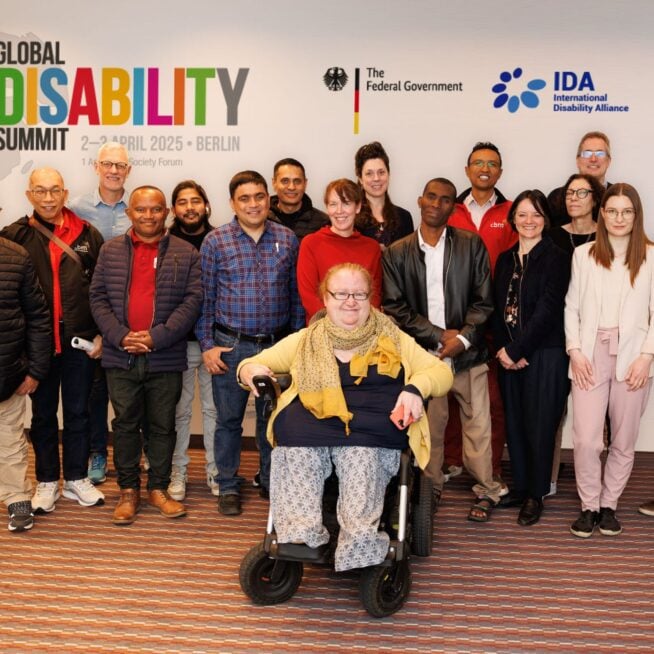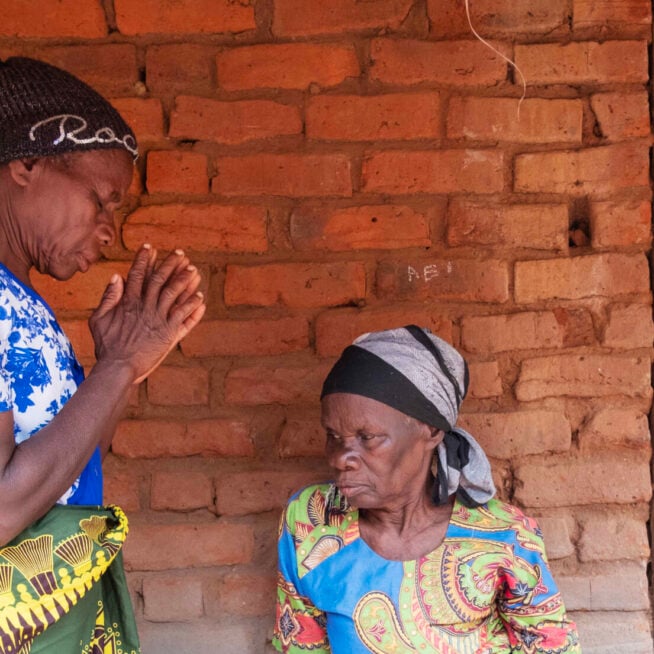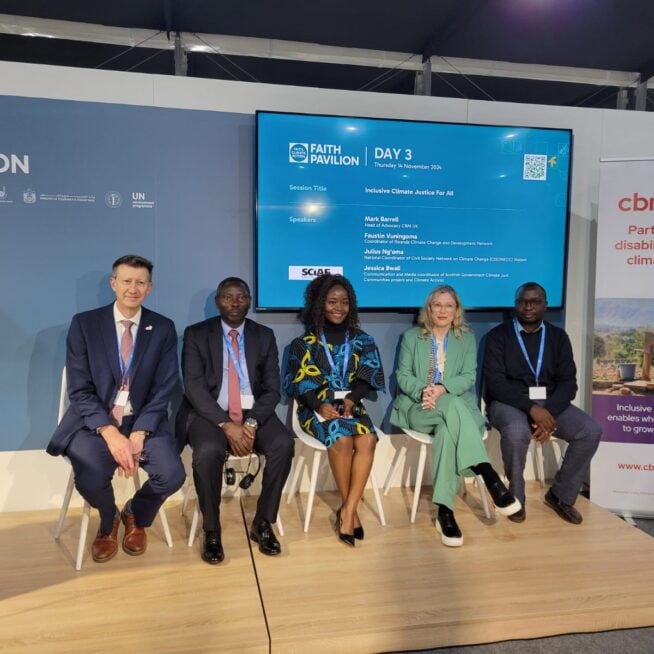Want to transform lives with us? Stay in touch and hear about our news, activities and appeals by email!
The human face of the climate crisis: Madagascar
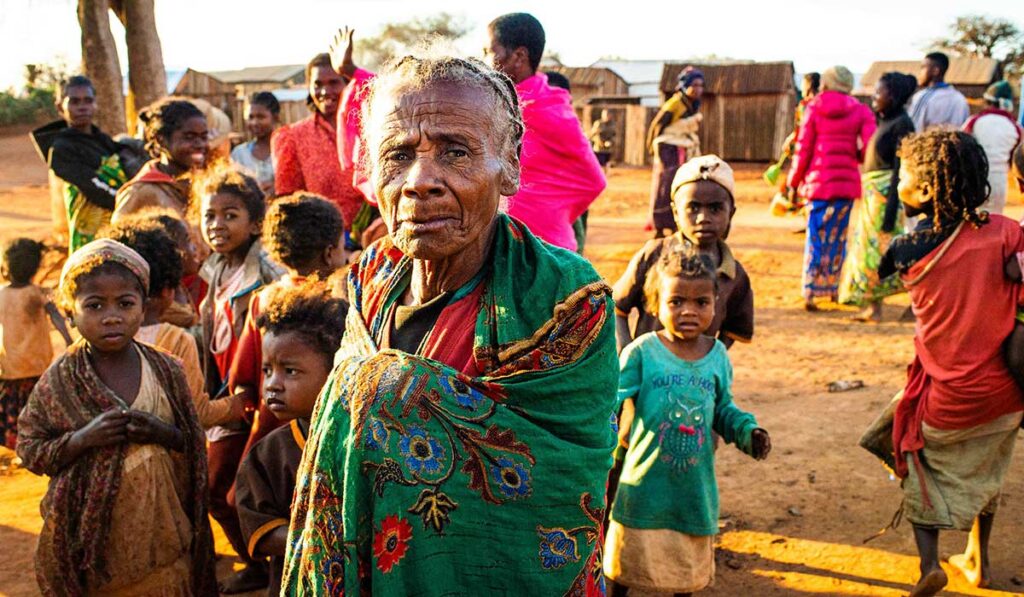
Back-to-back droughts in southern Madagascar, caused by climate change, have left more than a million people facing acute hunger and malnutrition.
The greatest threat and burden of the climate crisis is falling on the world’s poorest people – who have done the least to cause it. People with disabilities are among those hardest hit.
Photographer Viviane Rakotoarivony visited the affected areas with CBM in August 2021. In this blog, we share some of her photographs that tell the story of this devastating drought and its impact on people with disabilities and their families.
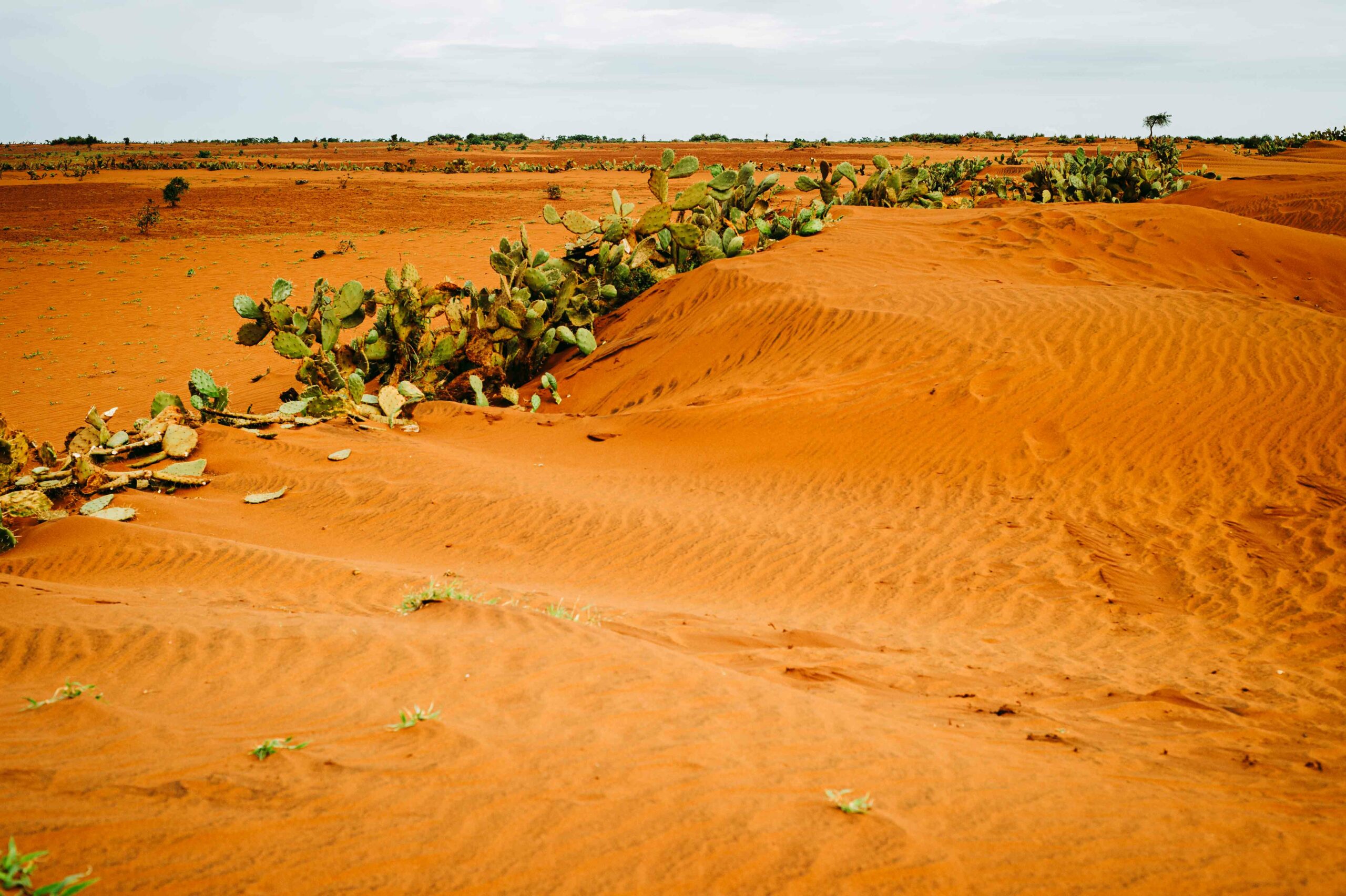
The extended drought has led to sandstorms; land that used to be covered by crops have turned into sand dunes. Only the cactus plants remain on the field boundaries. Crops have failed, livestock died and thousands of people have left their homes in a desperate search for food.
Families have been living on raw red cactus fruits, wild leaves and locusts for months now.
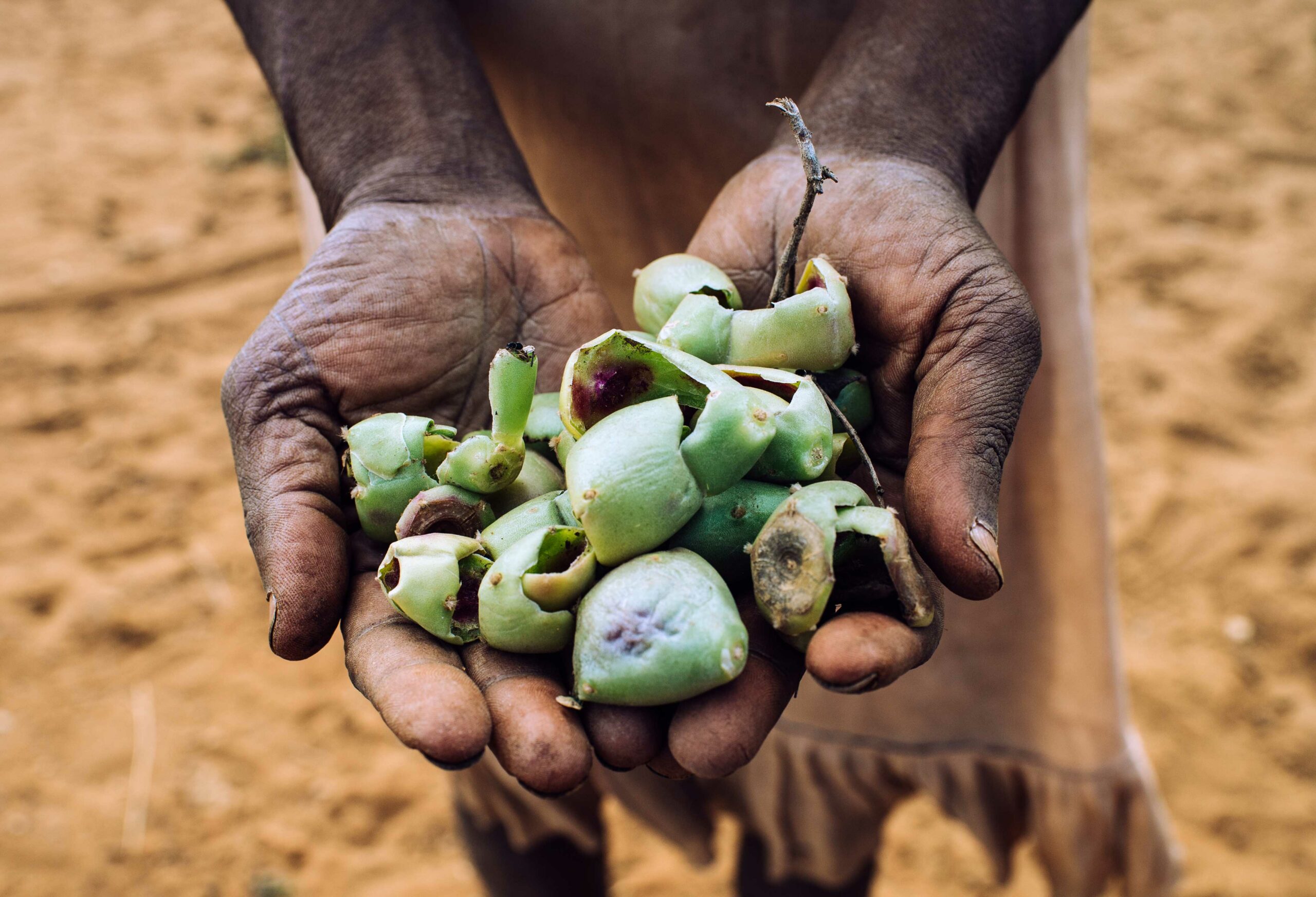
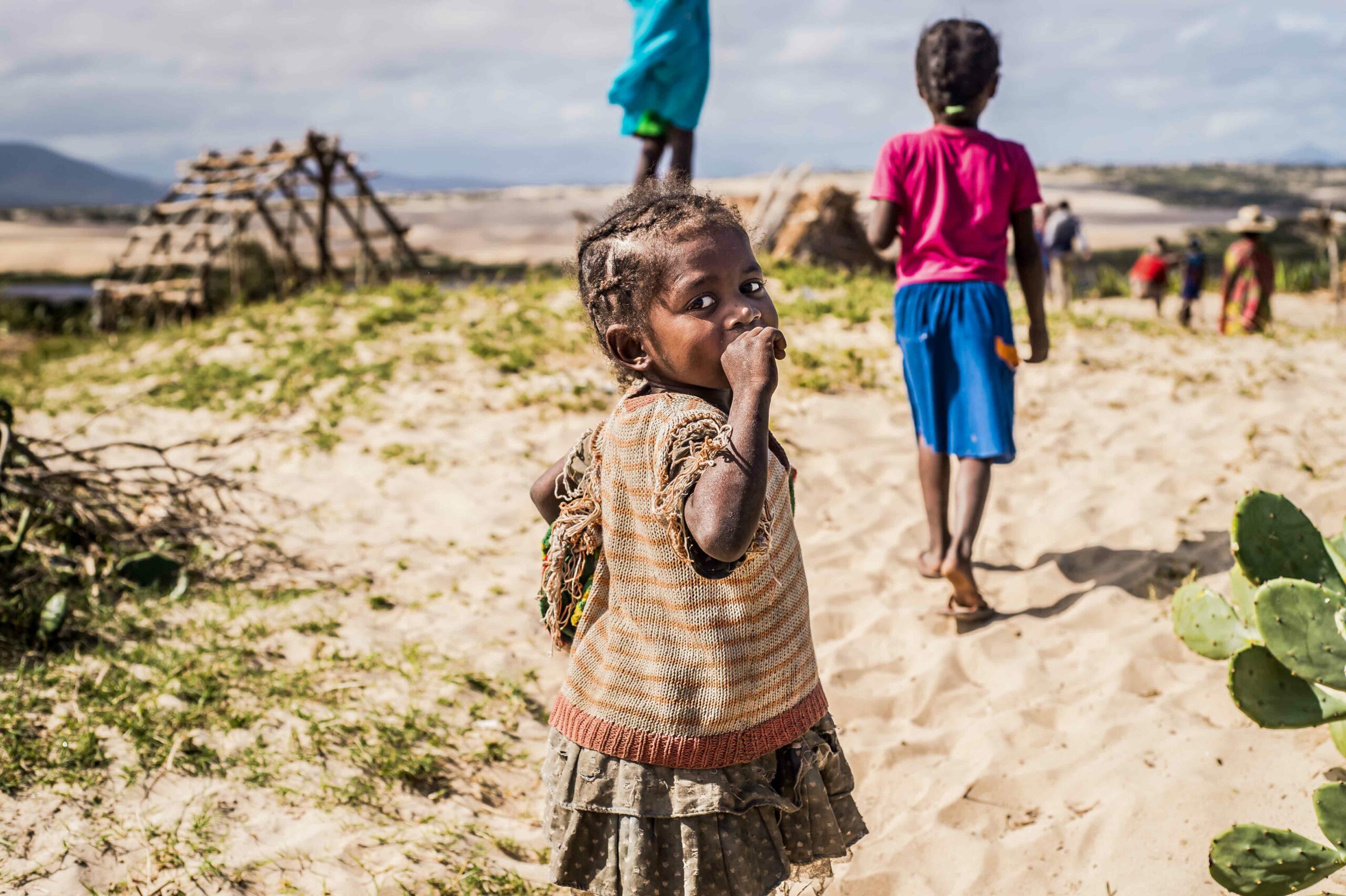
CBM is providing urgent assistance to 1,100 families in the Anosy and Androy regions of southern Madagascar, including 241 people with disabilities, enabling them to access food, water, medication, soap and other essentials.
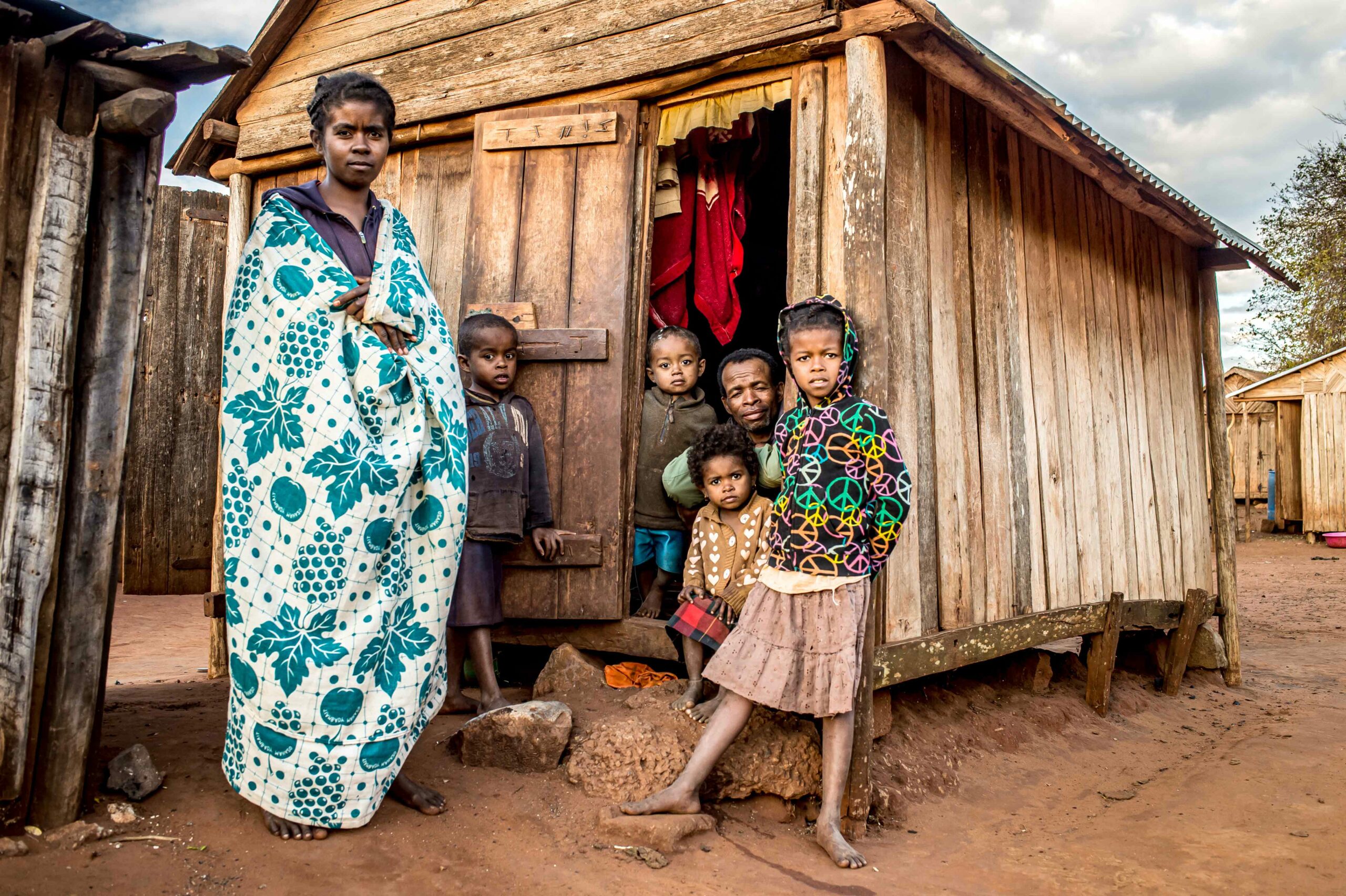
Christophine (pictured below) is hard of hearing. She is a single mother. After receiving the money from CBM, she was able to buy food for her children.
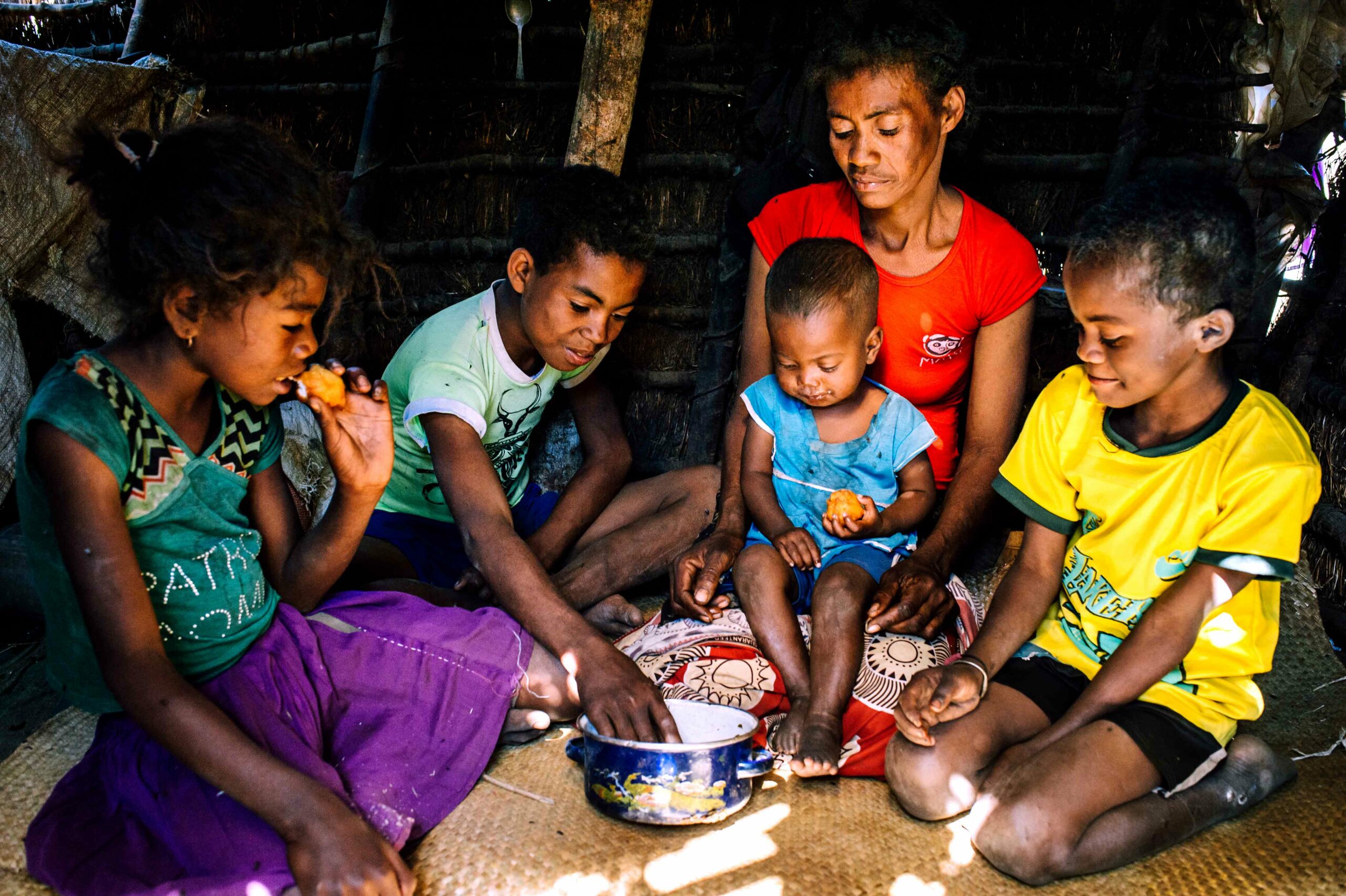
Haova (pictured below) is a mother of three who has a physical disability, which means she relies on her children to collect water and walking is painful. For months, she has been struggling to provide food for her family, who have been surviving on sweet potato and cassava leaves.
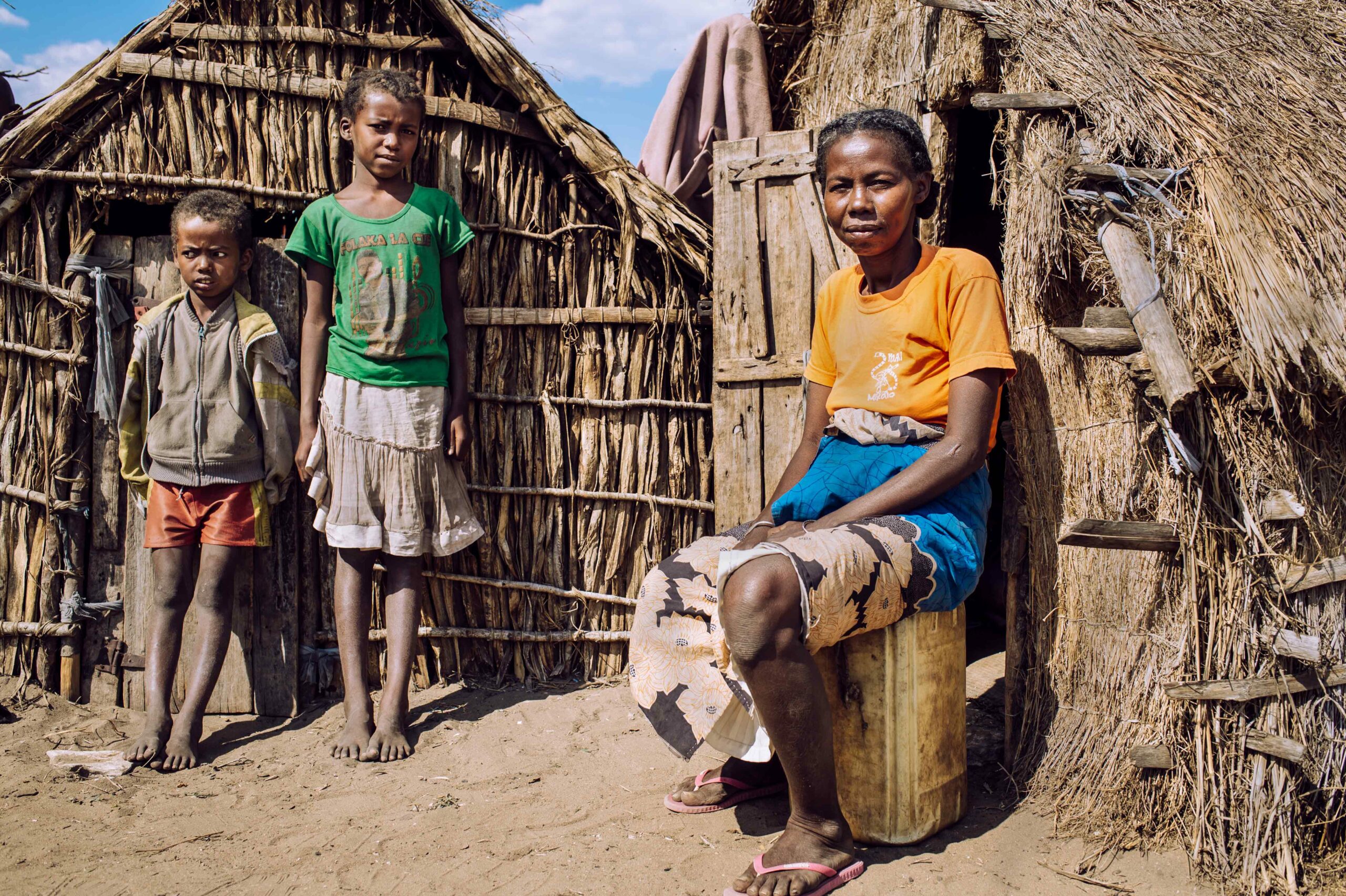
Thanks to assistance from CBM and their local partner, Haova has set up a small business making doughnuts that she sells in her village and has been able to purchase a laying hen to provide eggs. Despite the current difficulties, she is hopeful for the future.
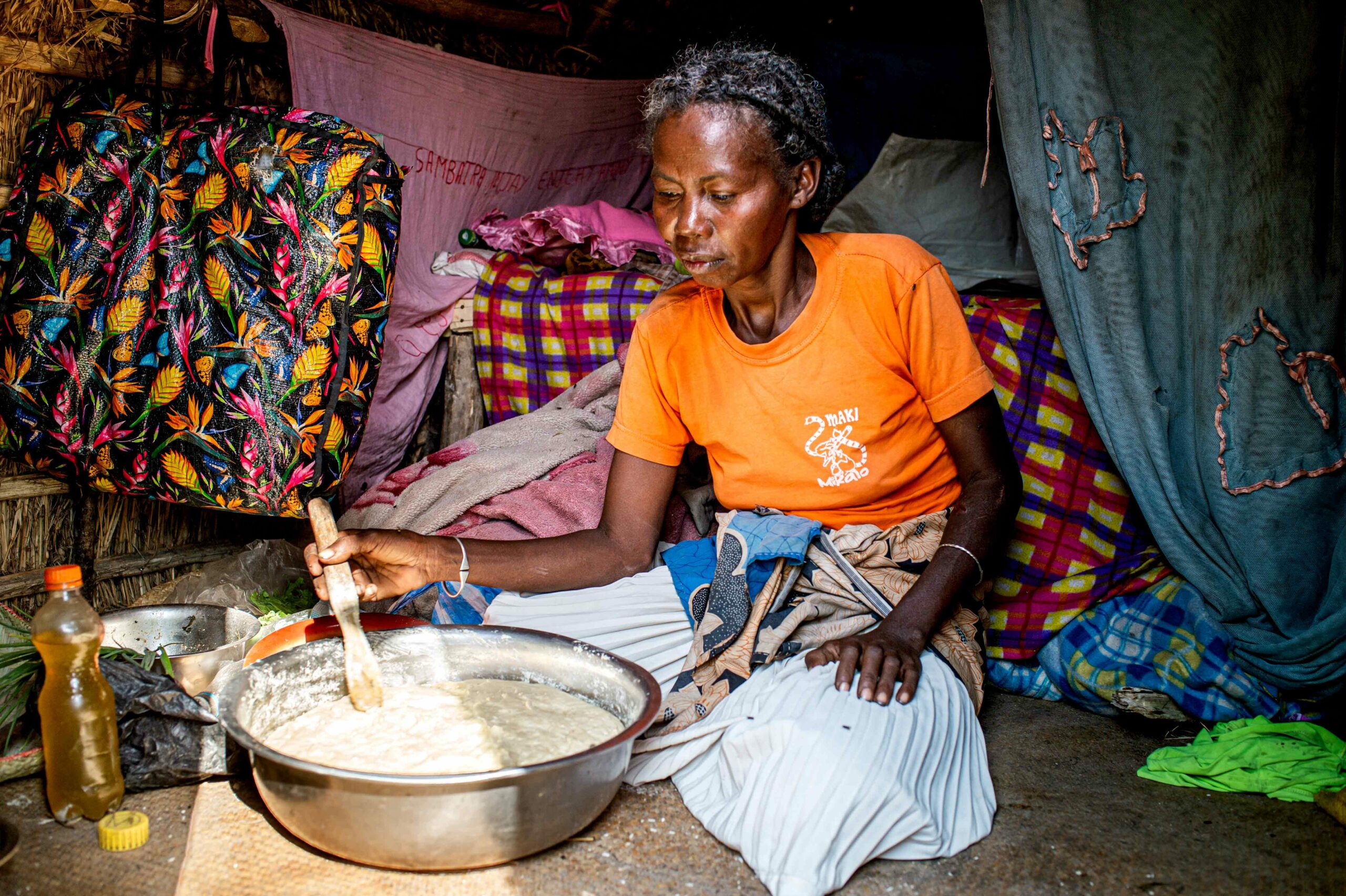
The drought rages in the southern region of Madagascar. The crops are covered with sand carried by the wind.
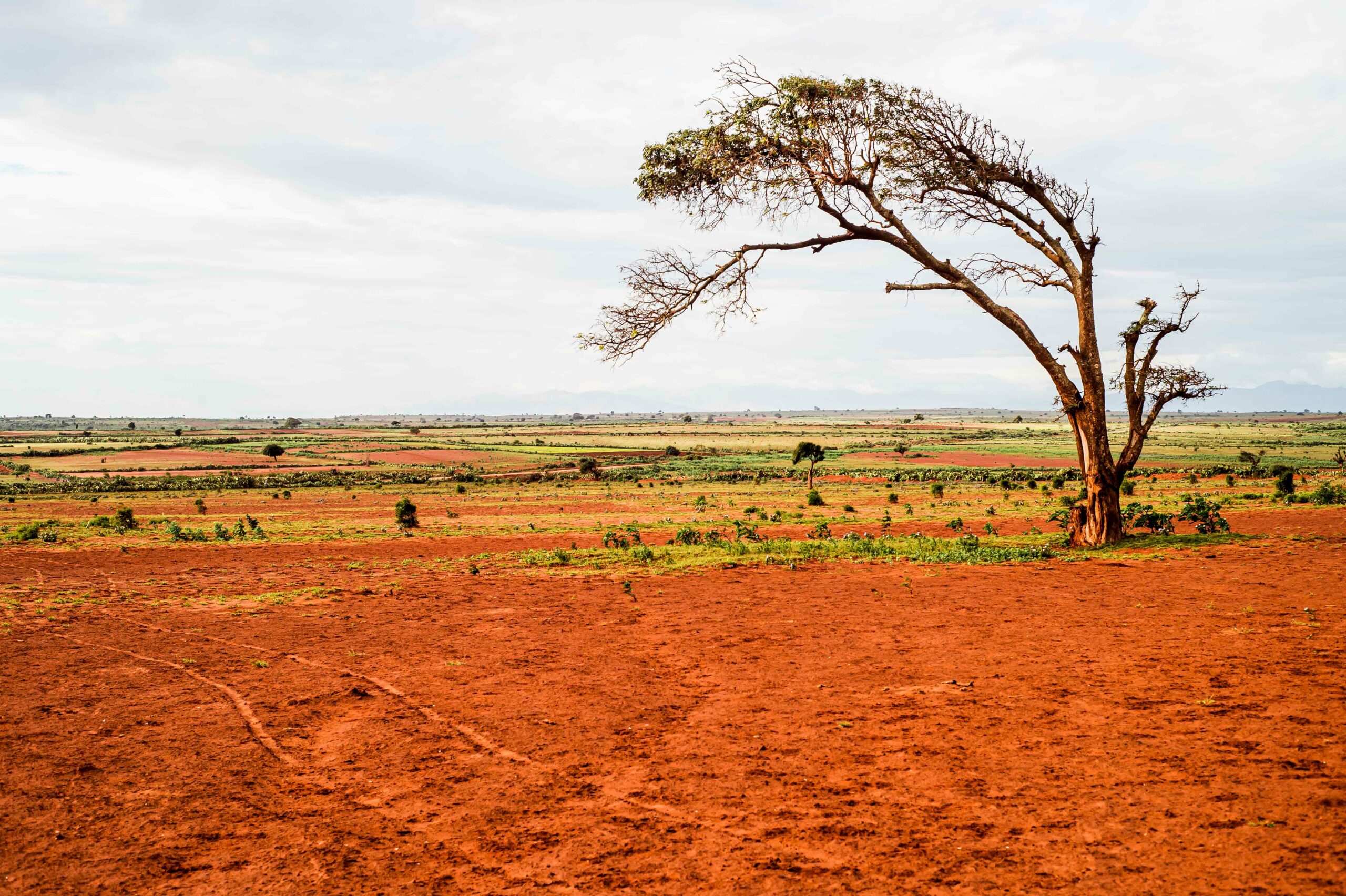
Josephine and her son (pictured below) work the land in spite of everything and hope that the harvest will not be destroyed by insects or by sand blown away by the wind.
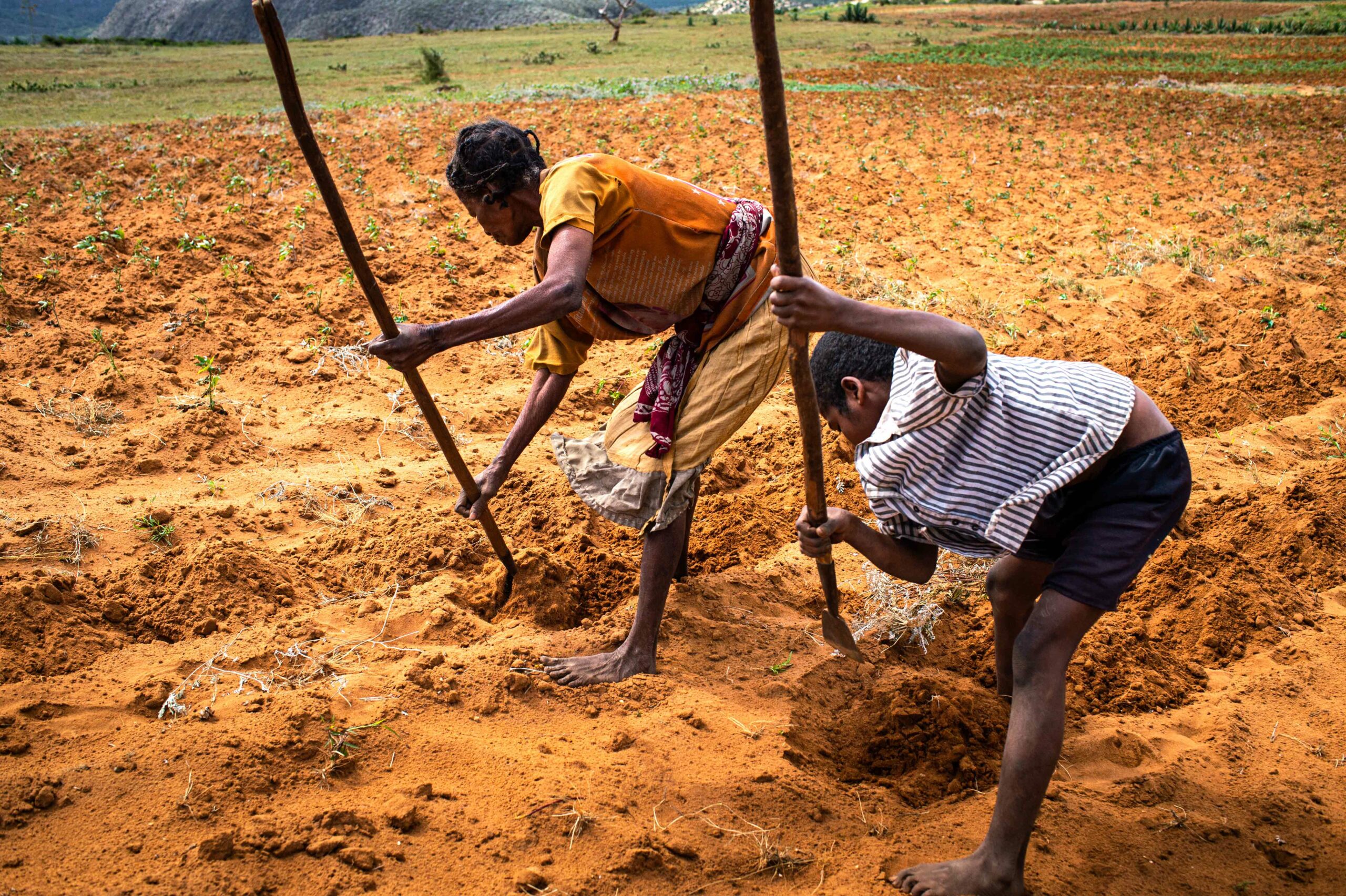
The elderly are among those most vulnerable, unable to cultivate the land to support themselves.
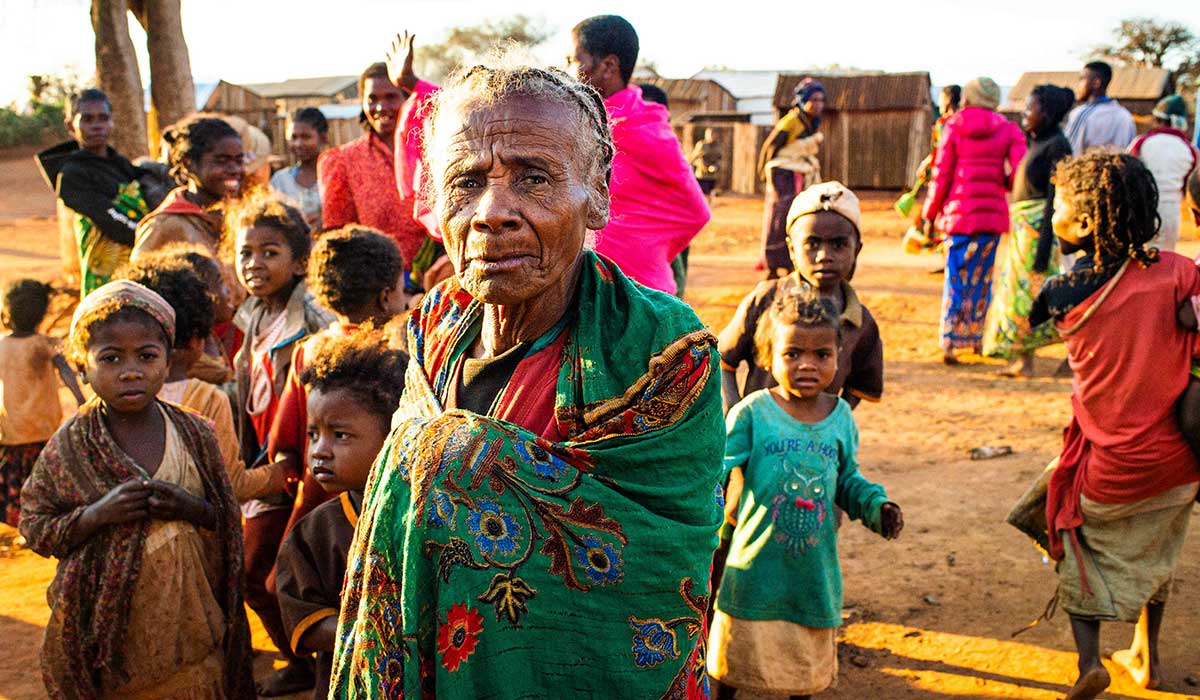
This elderly lady (pictured below) harvests weeds in the fields because she cannot afford to buy food. These weeds are not edible but she does not have a choice.
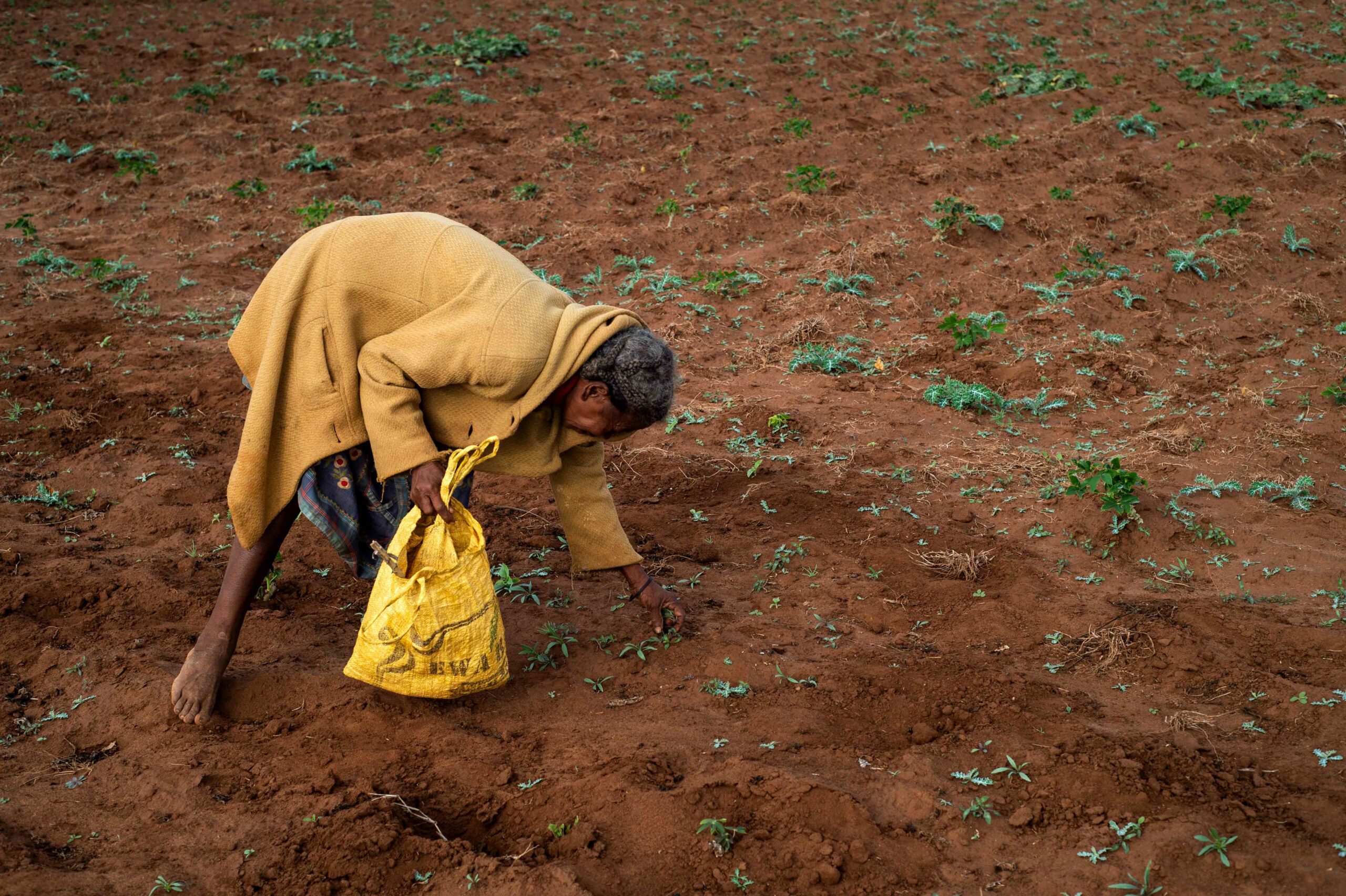
People come to fetch water from the Mandrare River. The oxcart is used as a means of transport for water and for various materials such as wood.
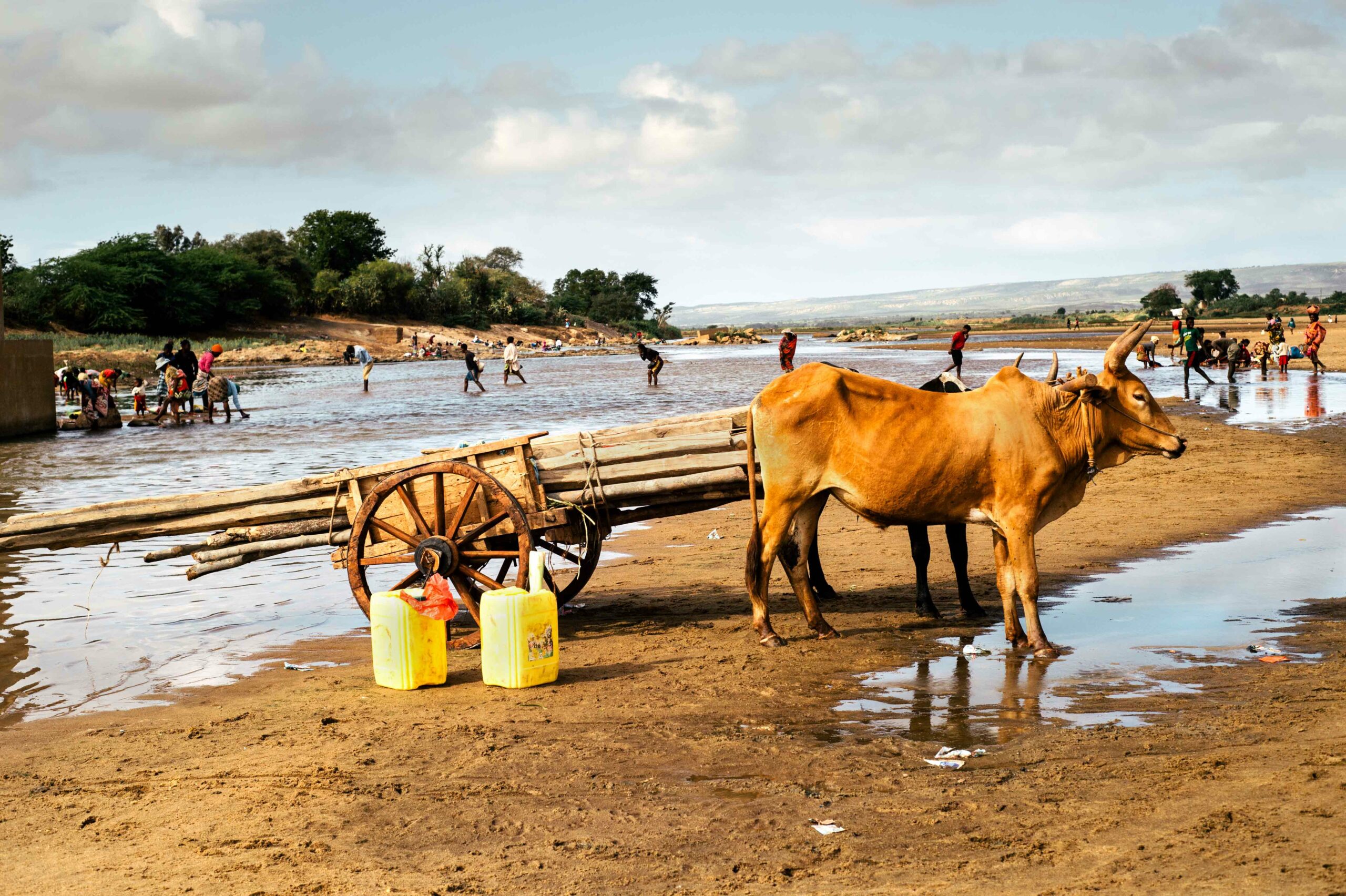
Water scarcity in the south remains a challenge. Families have to walk miles to get water. Yellow containers are used to transport water.
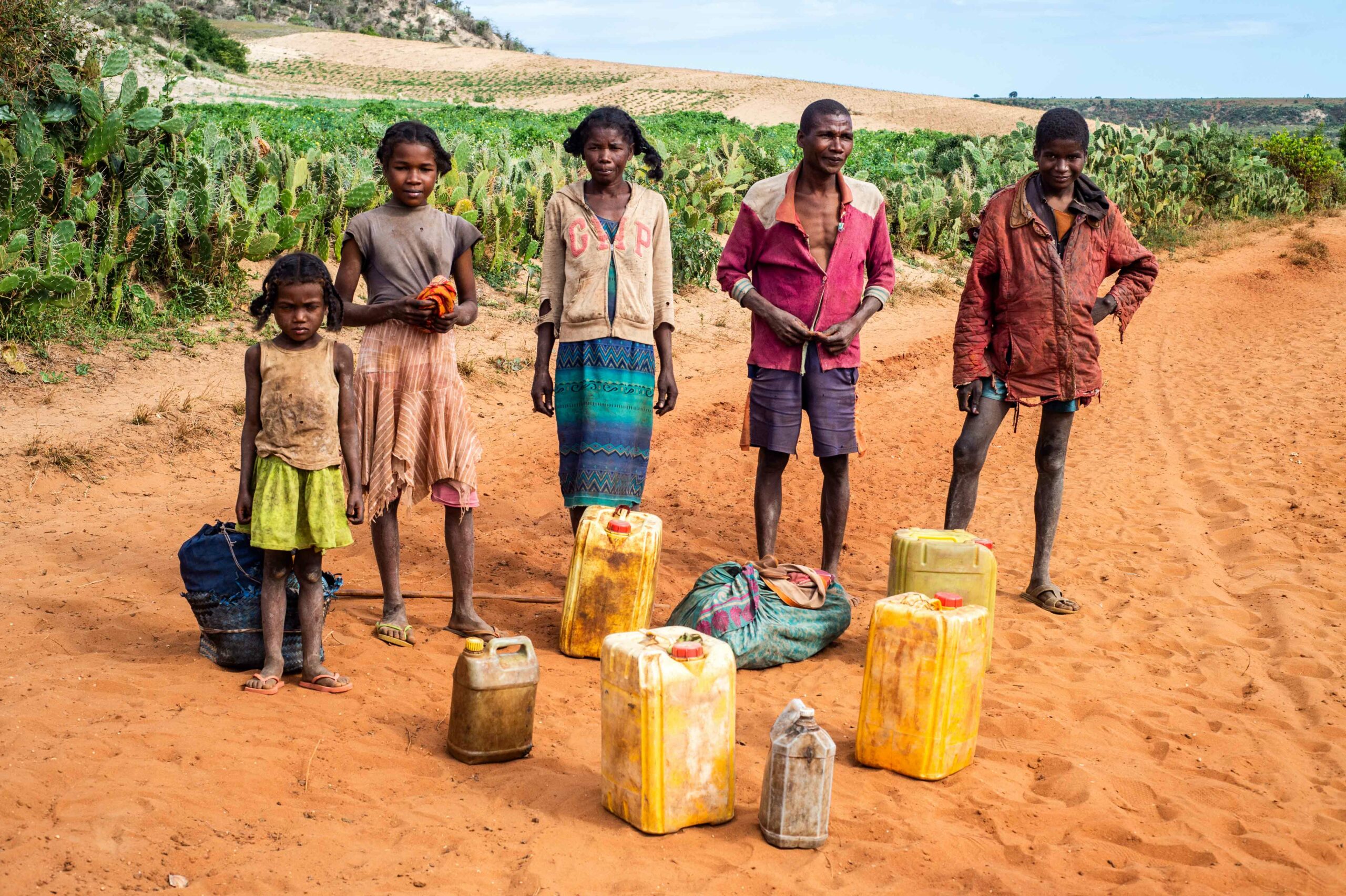
Many families are forced to drink water from unsanitary pools used by animals – which will soon dry up completely.
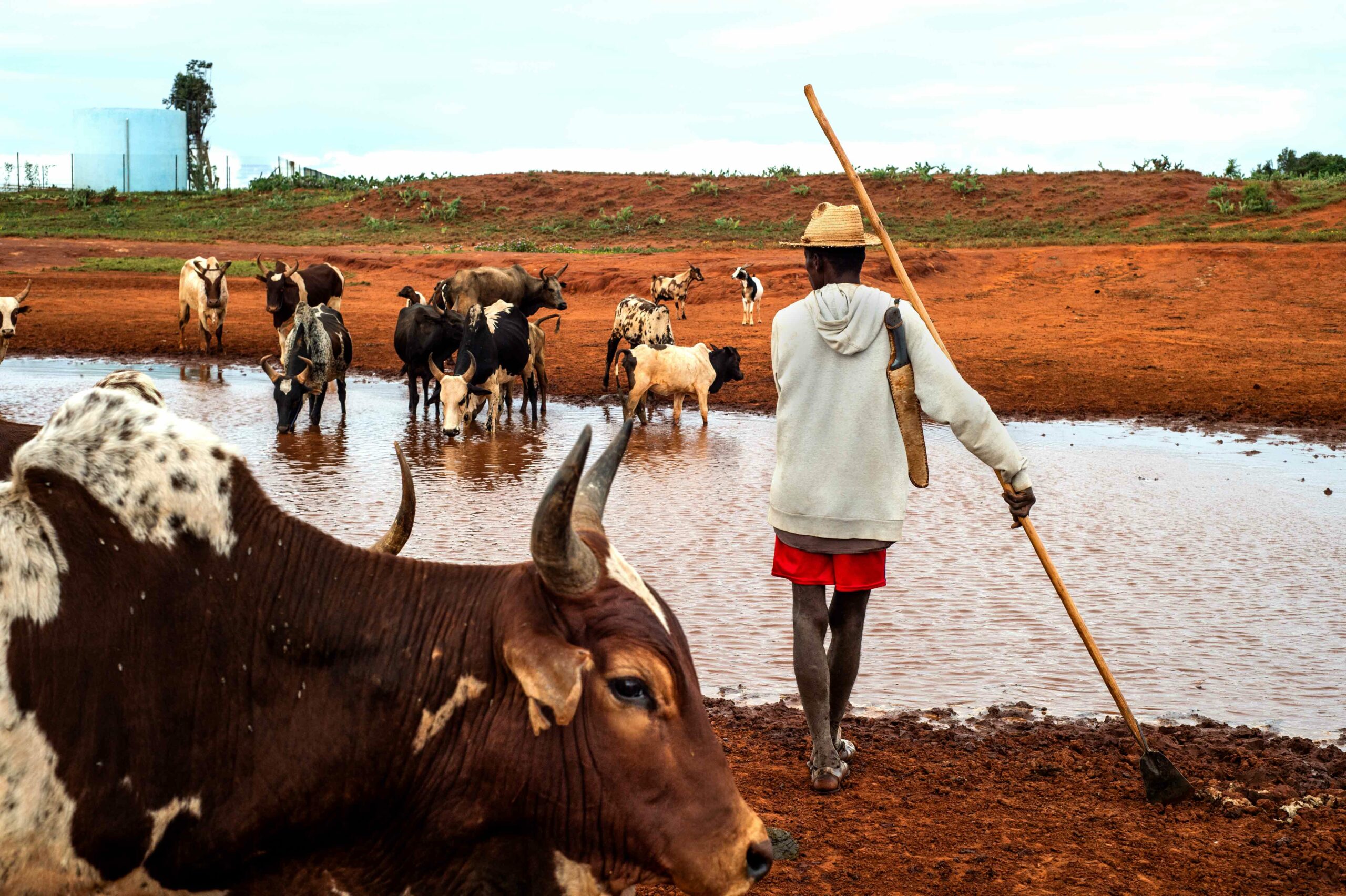
Christophine (pictured below) and her children bring in wood that they would sell afterwards to earn some money. This is how they make a living.
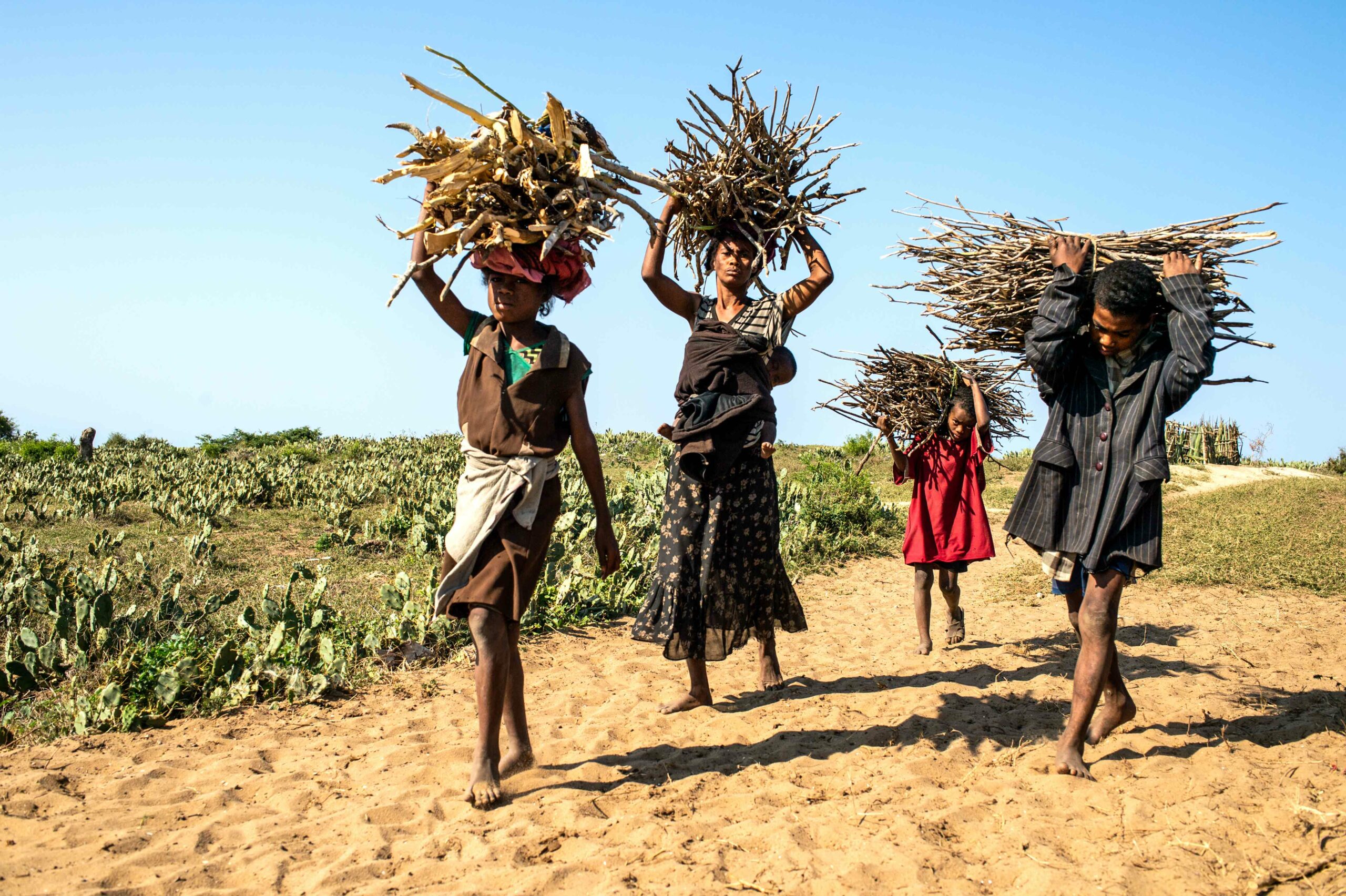
As always in times of crises, people with disabilities and their families are among those most vulnerable – and the least likely to access emergency help. Already often among the poorest in their communities, they may be unable to walk long distances to access emergency food distribution or find out about what help is available.
Mosa, 45, and his mother (pictured below) had to sell their house so they could buy food, once their crops failed. They now live in a tiny wooden hut. Mosa has a physical disability and a learning disability.
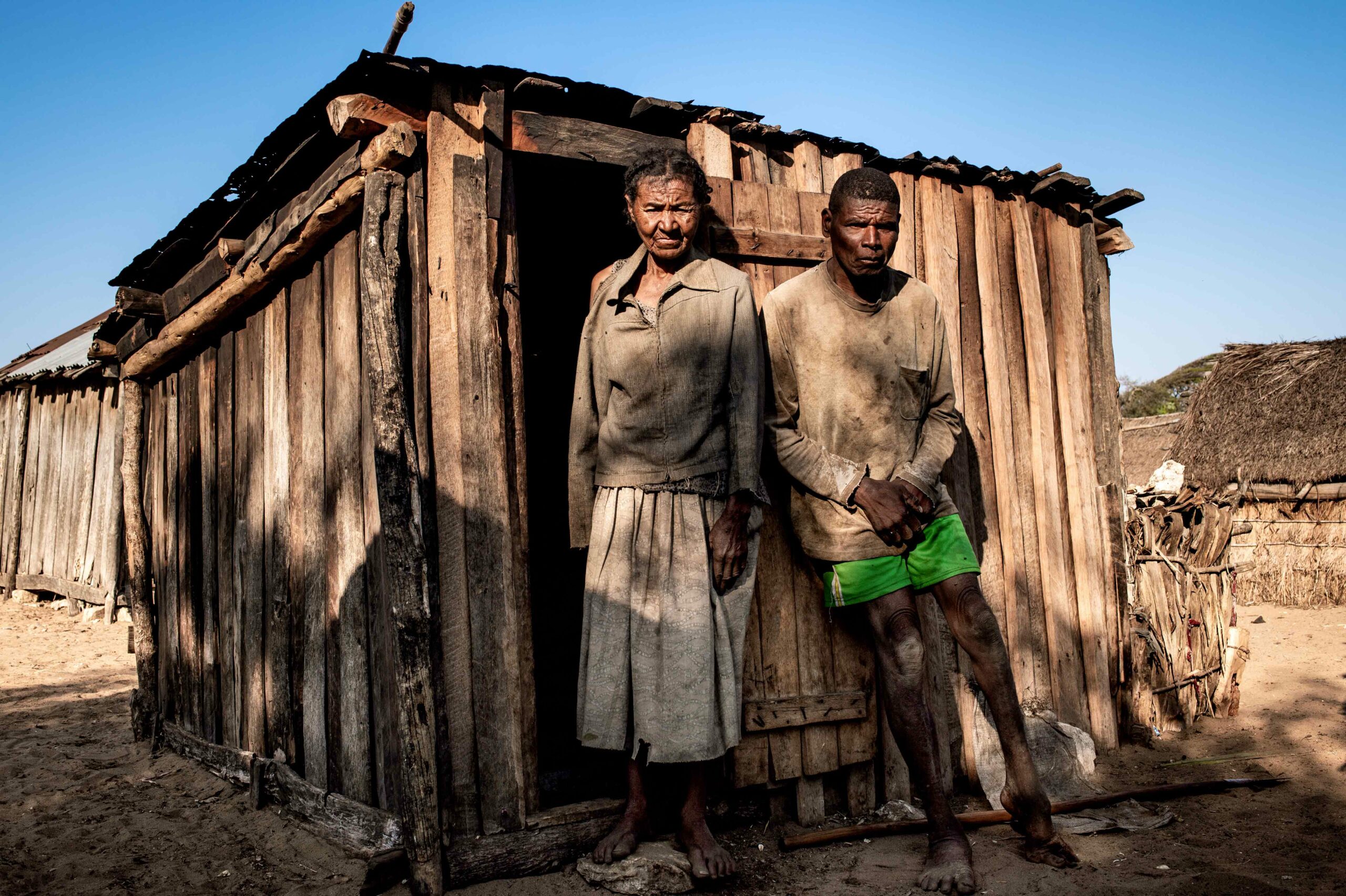
“Because of the drought, we go to the town of Amboasary from time to time to get food. We leave early in the morning and arrive at nightfall because I can’t walk fast. We had a nice house in the past but we had to sell it to buy food.” says Mosa.
Mosa uses his spade as a crutch to help him walk.
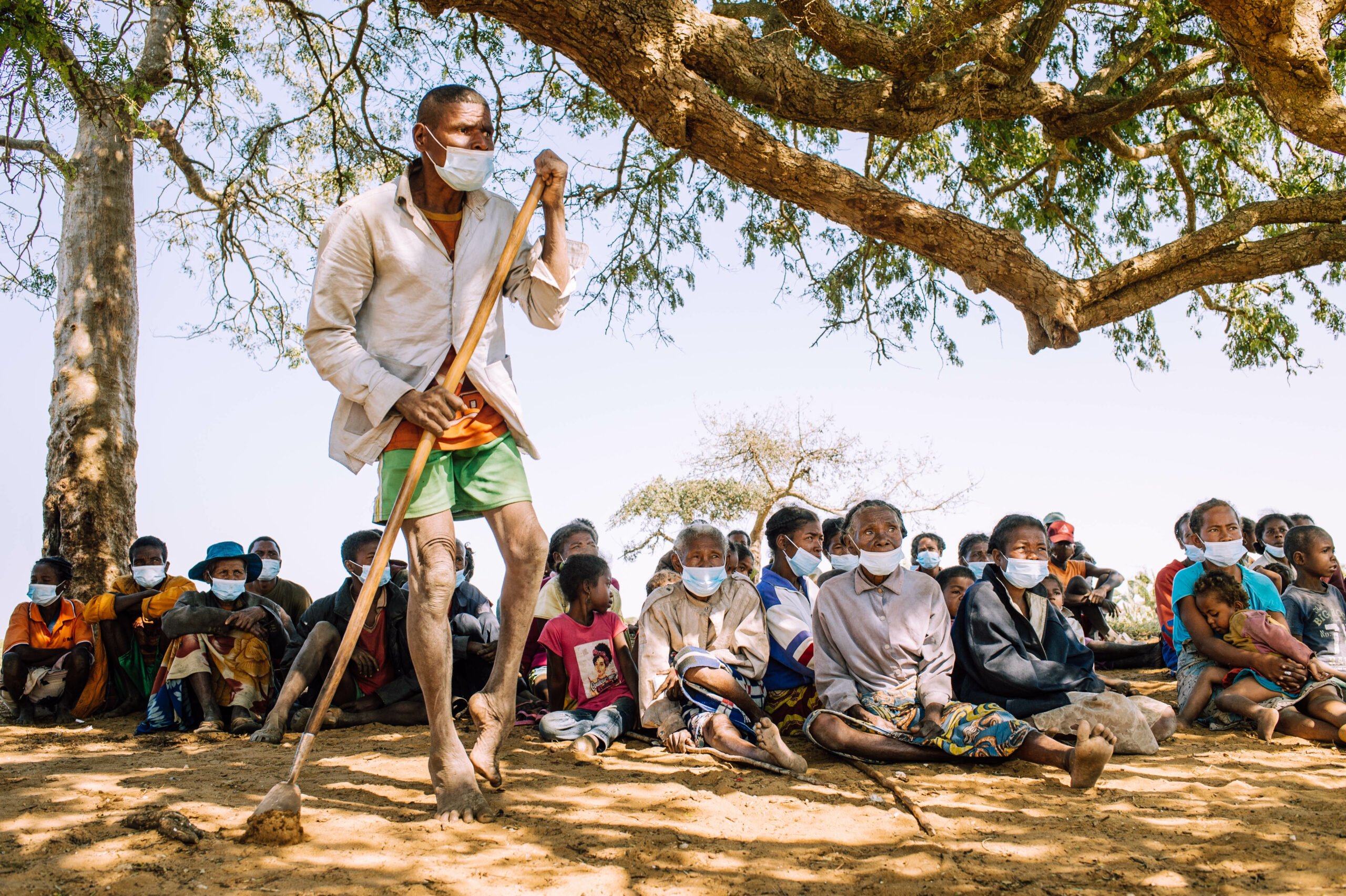
Mosa attends a cash transfer session carried out by CBM and their partner in the Commune Berano Ville.
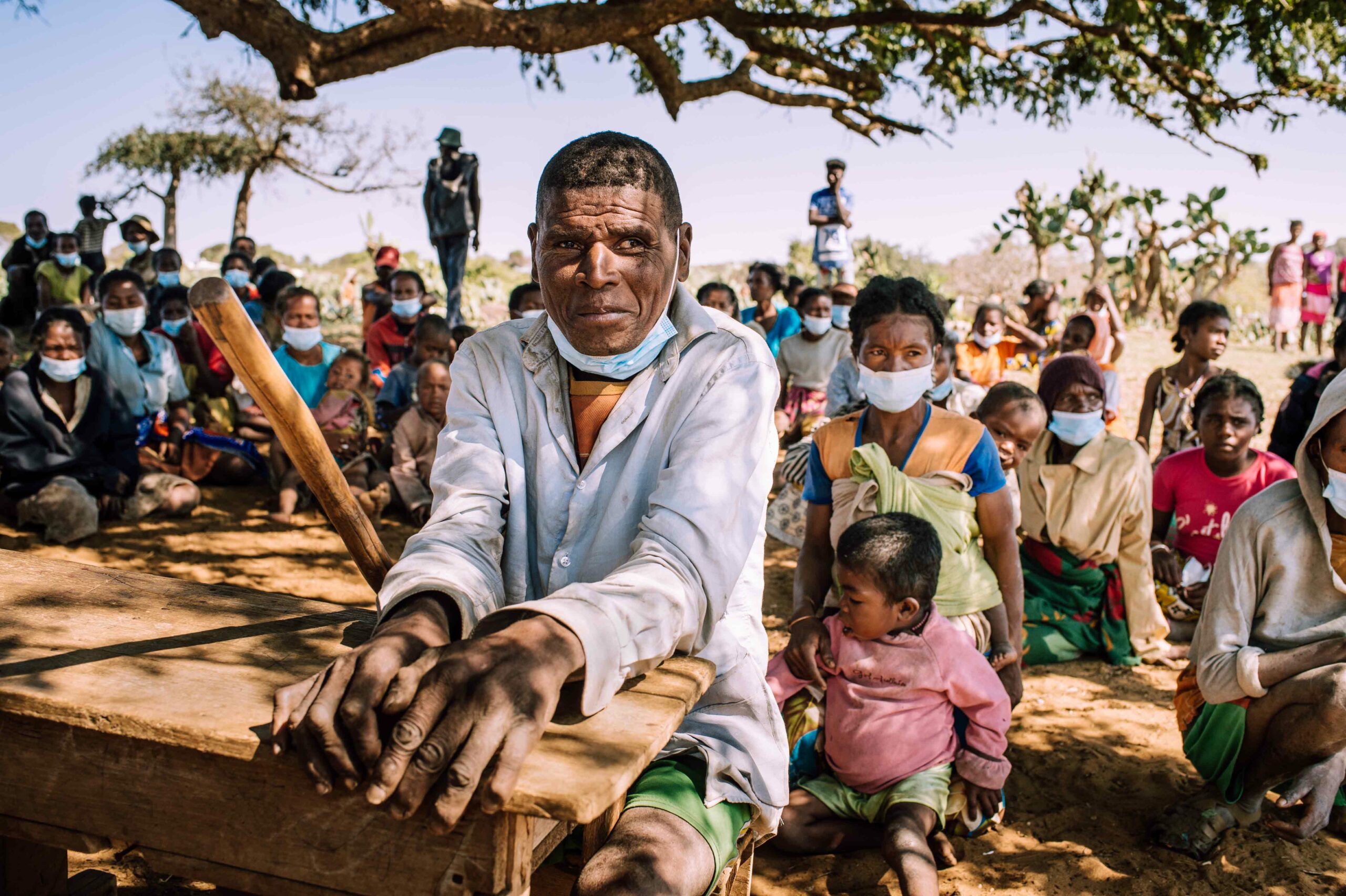
Thanks to this support, Mosa and his mother have been able to buy food and cooking pots. His mother says: “We thank CBM because we suffered a lot before, we received money that allowed us to buy pots and also some food to eat.”
CBM’s local partner has identified the most highly food insecure families, including households with people with disabilities. Tonety (pictured below) has a 12-year-old son called Maharavo, who has intellectual and physical disabilities.
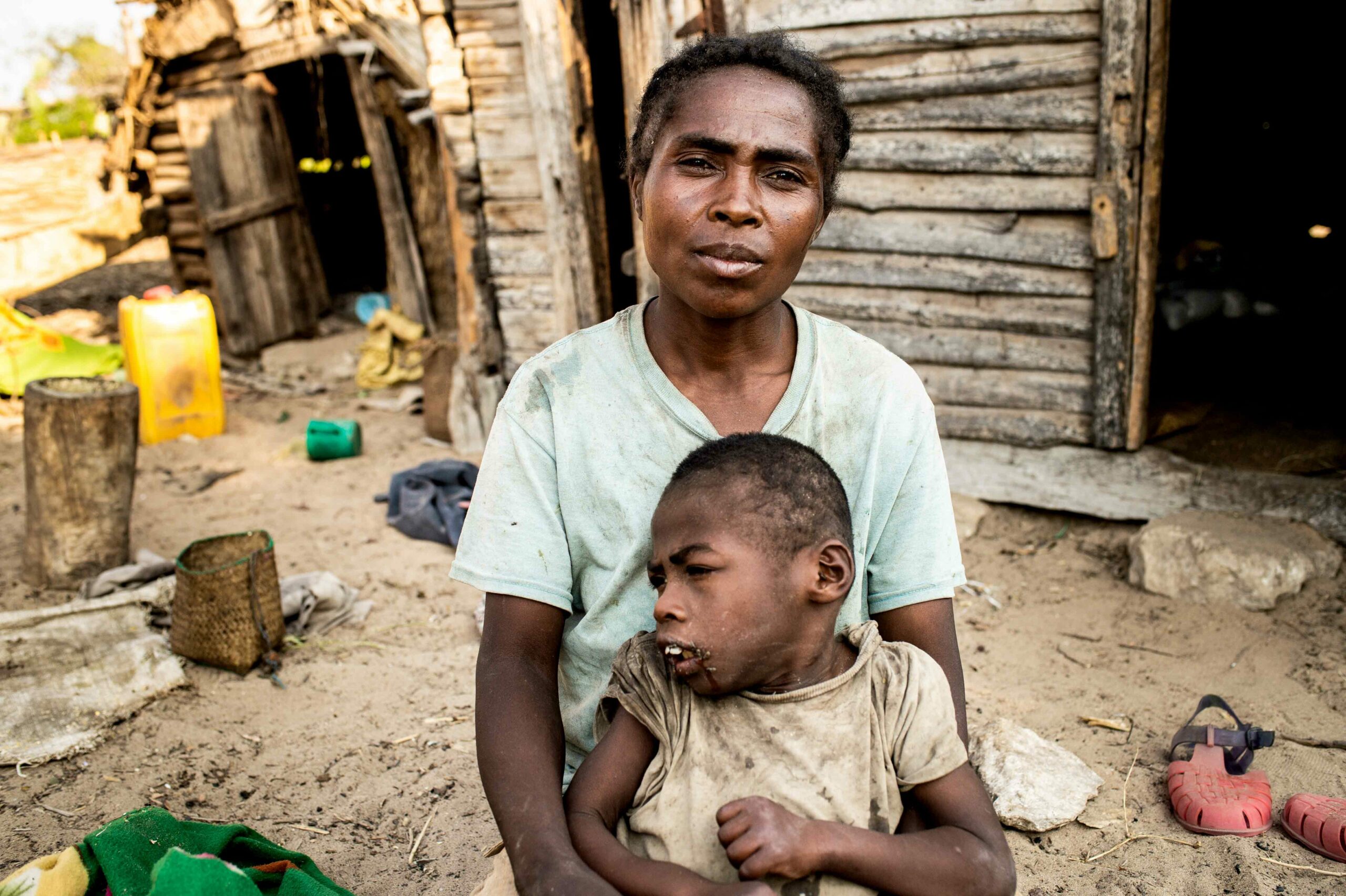
Tonety collects money from CBM and their partner to help support her family.
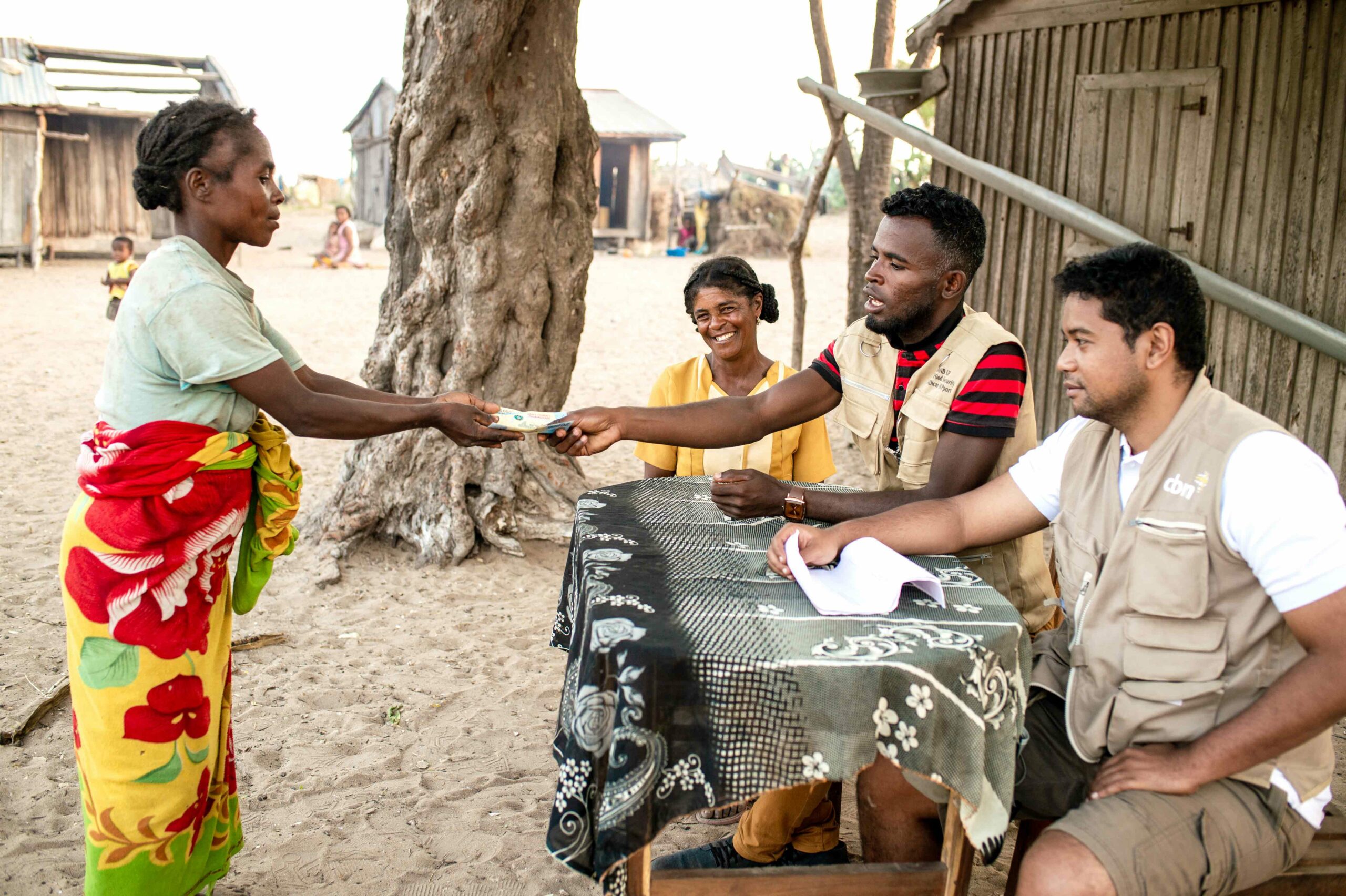
Each family is receiving cash support to enable them to cover their basic needs for five months, but also to help them improve their future food security and ability to earn an income, for example through buying chickens.
9-year-old Liasoa (pictured below) lives with her grandmother. She has physical and intellectual disabilities and requires full time care as she cannot walk unaided, feed herself or speak. Because of Liasoa’s needs, her grandmother cannot work – she fetches and sells wood to make enough money to buy rice to feed Liasoa, whilst carrying Liasoa on her back.
“When we have nothing to eat, my neighbours give us some in a plate.”
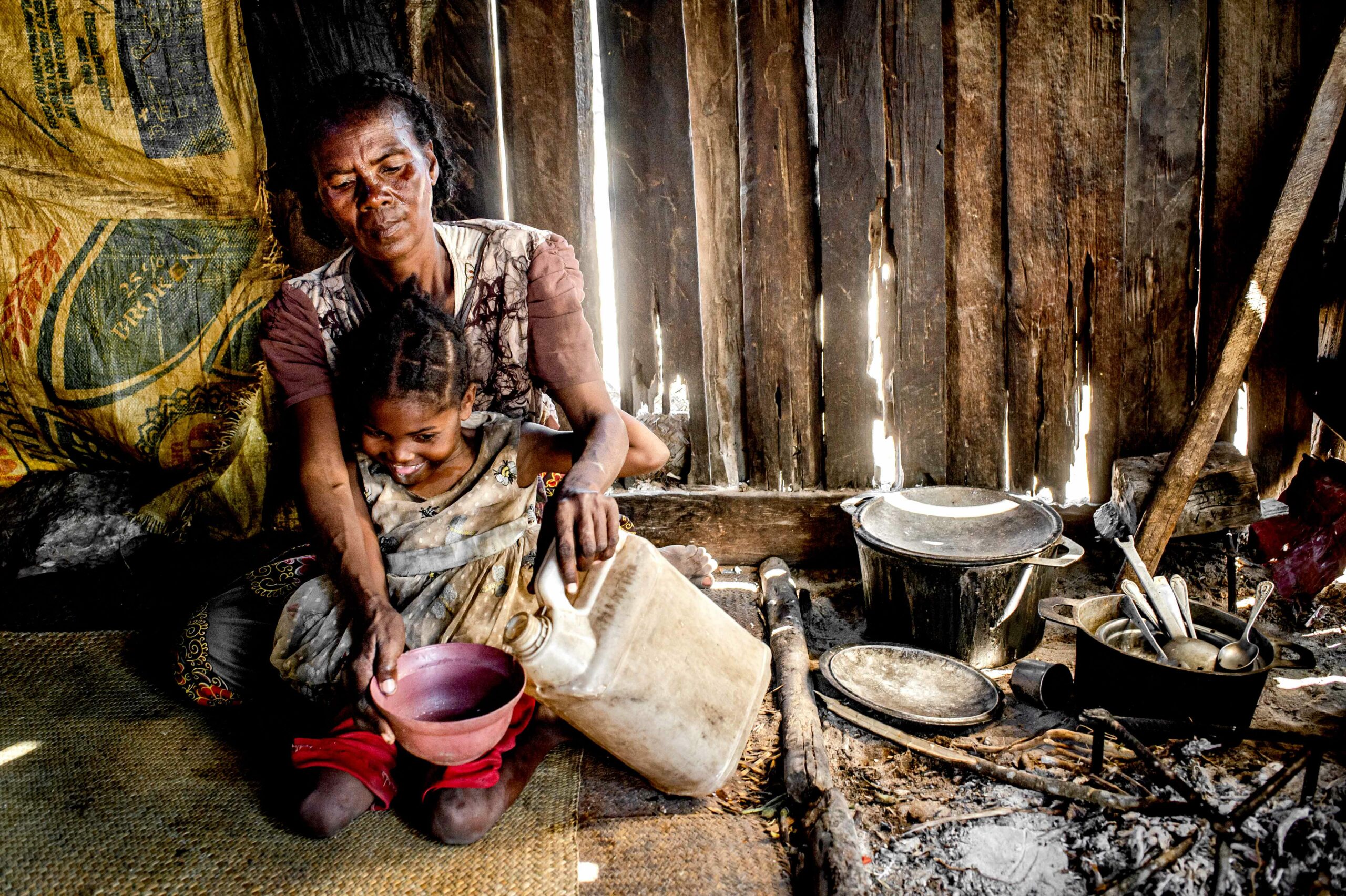
The financial support Liasoa and her grandmother received has changed their lives. Liasoa’s grandmother is now able to provide for her granddaughter and no longer has to walk for miles to find wood to sell.
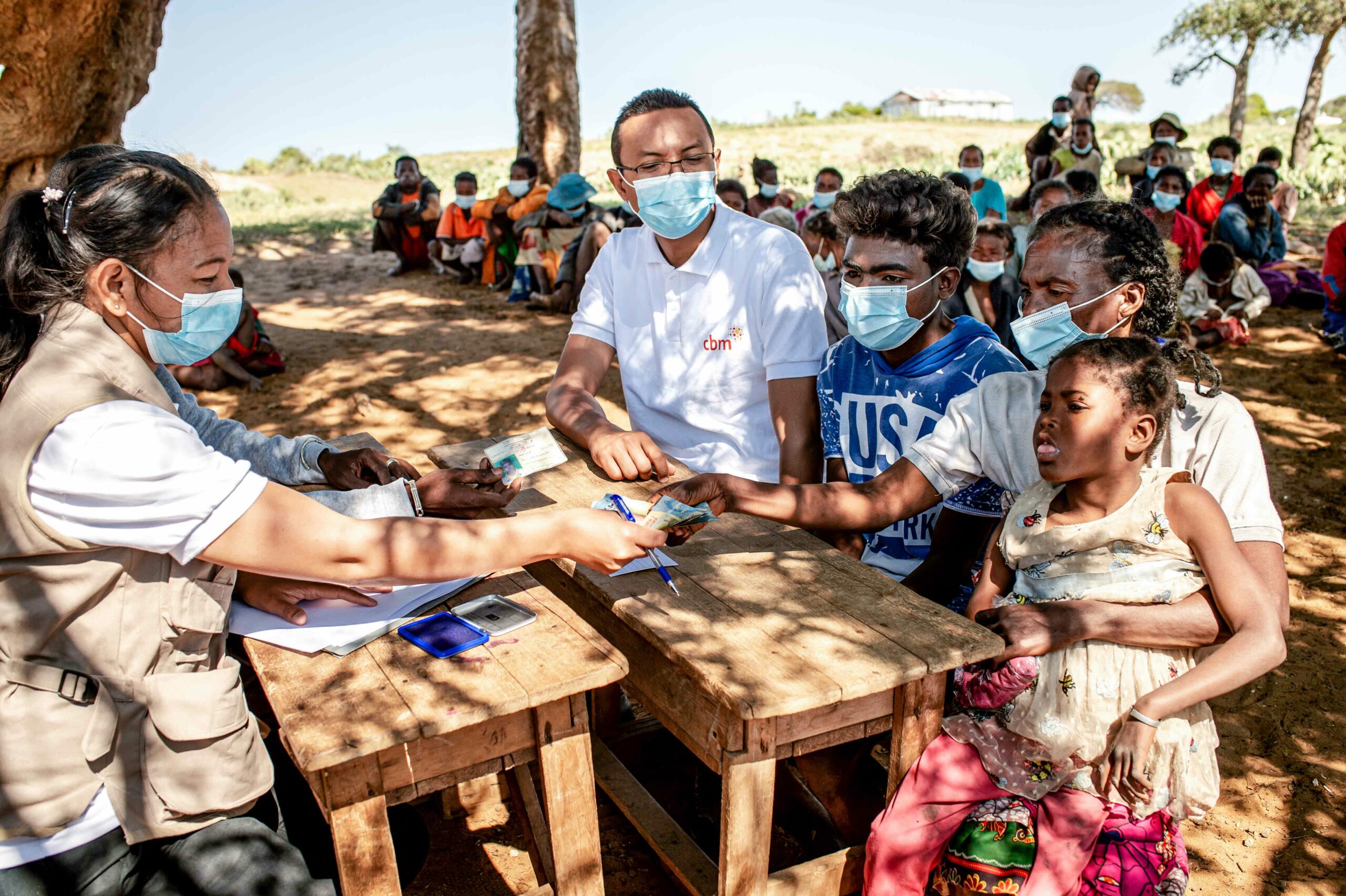
As well as providing direct support to families, CBM is working with local disability organizations in the region to ensure that other agencies responding to the crisis are making the emergency relief they offer accessible to people with disabilities.
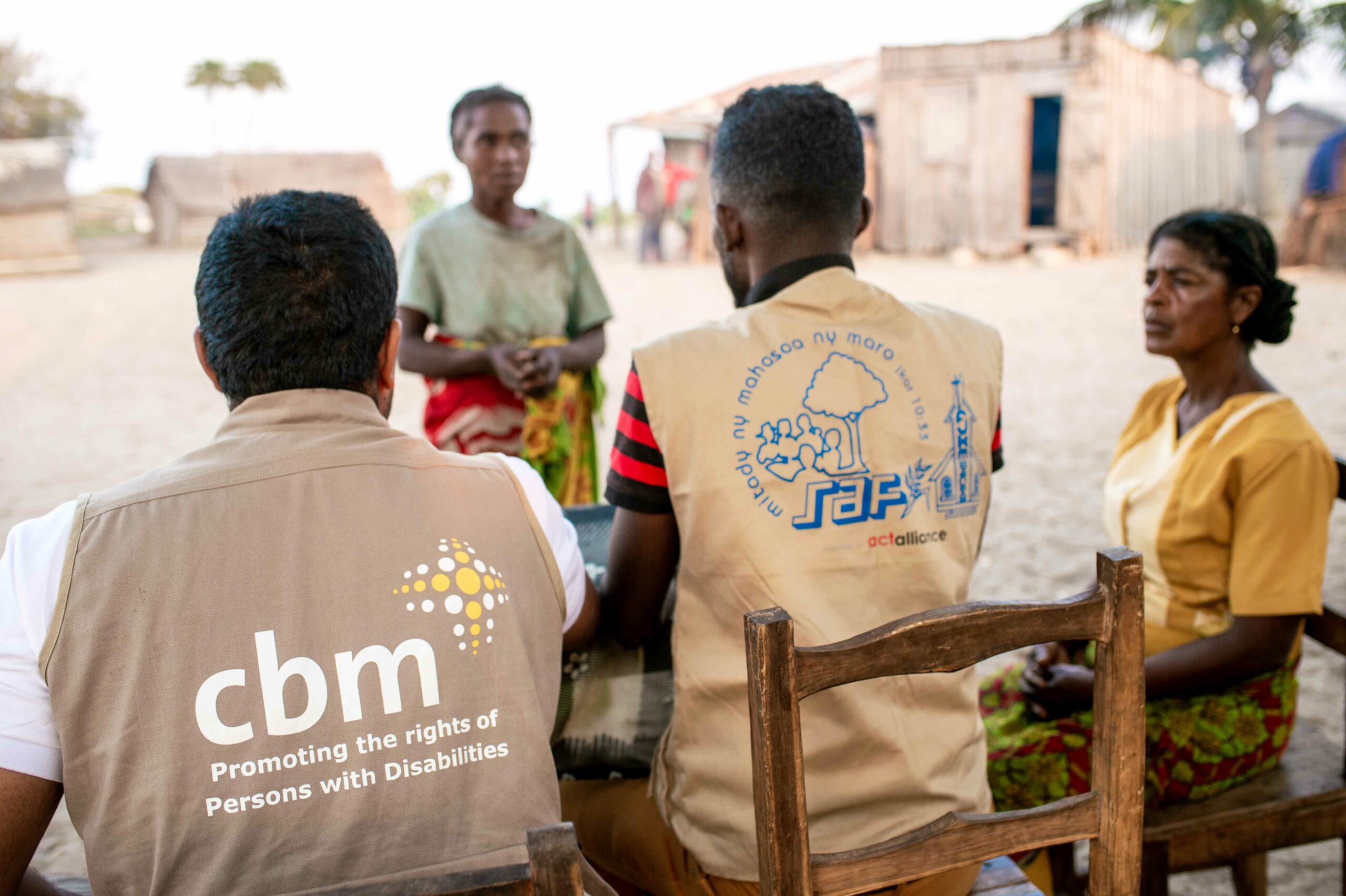
Tsihala (pictured below) has an intellectual disability. She spends most of her days in this hut and her brother cares for her. Despite difficulties in expressing herself, Tsihala is brave, independent and enjoys helping with household chores. Although farming was their way to survive, the drought has left their land dry and unusable. Thankfully they have received food assistance from CBM and their partner, including rice, meat and vegetables; a diet that was long forgotten by Tsihala and her family who have been living off red cactus fruit and cassava leaves.
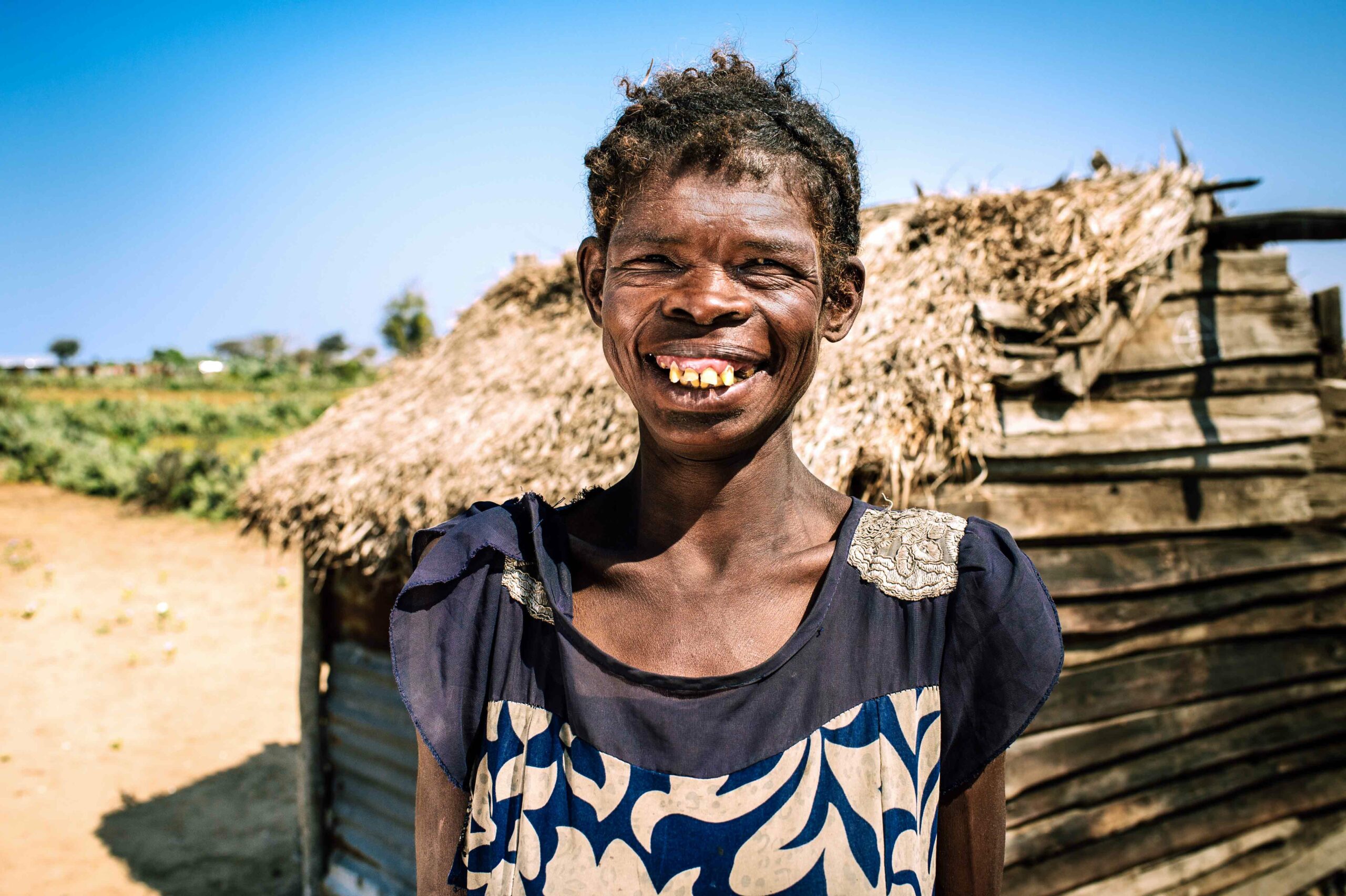
People with disabilities must be meaningfully included in responses to the climate crisis and disaster risk reduction. Find out more about CBM’s inclusive climate action.
Images: 1st – A deserted desert with only a line of cactus growing. 2nd – Hands holding raw red cactus fruits. 3rd – Child looking back towards the camera with desert in the background. 4th – Family standing in front of their house. 5th – Family sitting on the floor of their house eating from one pot of food. 6th – Women sitting and two children standing in front of their wooden huts. 7th – A women sitting stirring dough in a metal bowl. 8th – Very dry, sandy landscape with one dying tree still standing. 9th – Mother and son using tools to prepare the ground for planting. 10th – Elderly lady looks straight at the camera and stands in front of a group of children. 11th – Older lady bent down harvesting the weeds with her hands. 12th – An ox standing on the edge of a lake with a cart attached. 13th – A group of young people standing, with containers to transport water, in front of them. 14th – Oxen standing in a lake and a man standing on the edge of the lake with a water container. 15th – One adult and three children, carry large bundles of sticks above their heads as they walk on the sand. 16th – Mother and son stand outside their wooden hut. 17th – A man standing up with the help of a spade, with many people sitting down behind him. 18th – A large group of people sitting under a tree with one man in the foreground looking straight at the camera. 19th – Women holds her son in front of their wooden hut. 20th – Two men and one woman sitting behind a table. One of the men reaches over the table to collect money from another woman. 21st – A women sits in her wooden hut, with her daughter on her knee, pouring something into a bowl. 22nd – A family sitting across the table from a CBM worker. 23rd – CBM and other local disability organisation members sitting at a table with their backs to the camera. 24th – Women with a big smile on her face, standing in front of her wooden hut.
